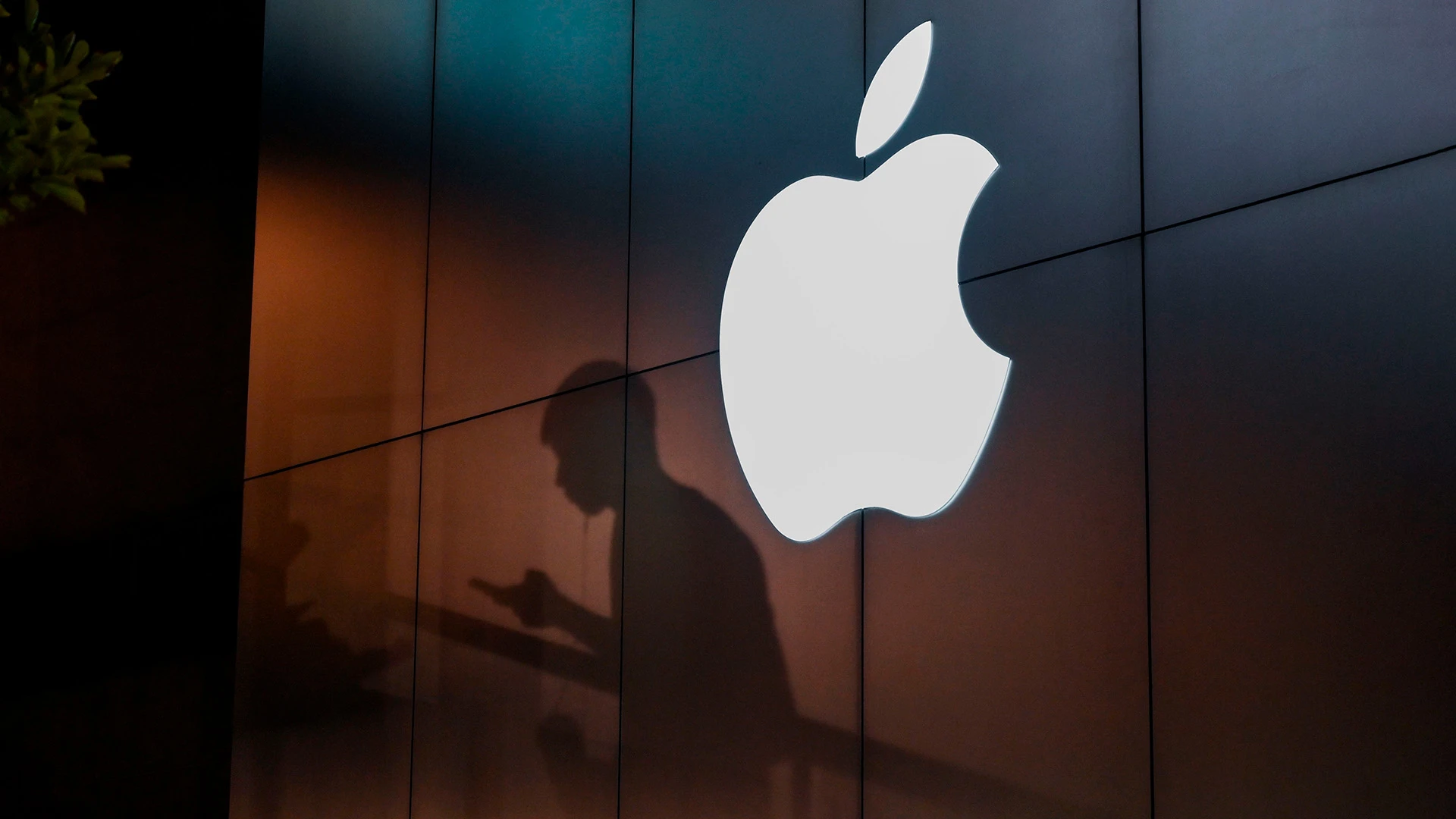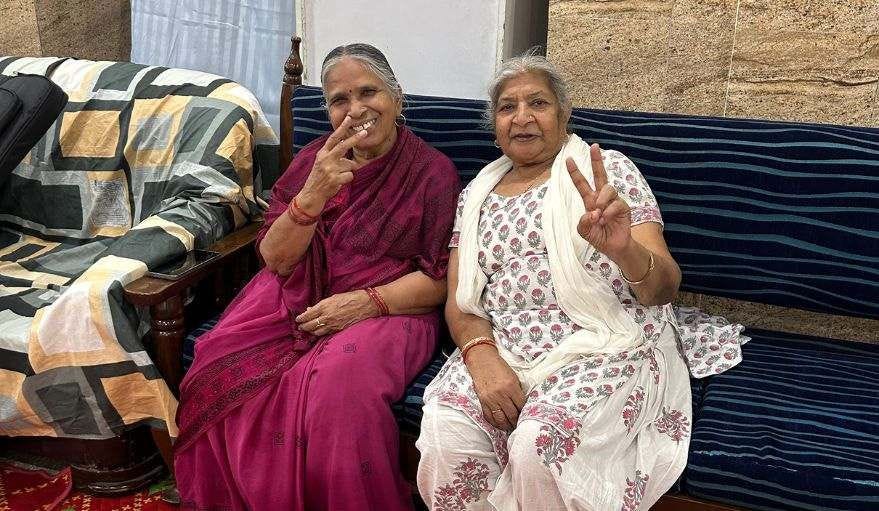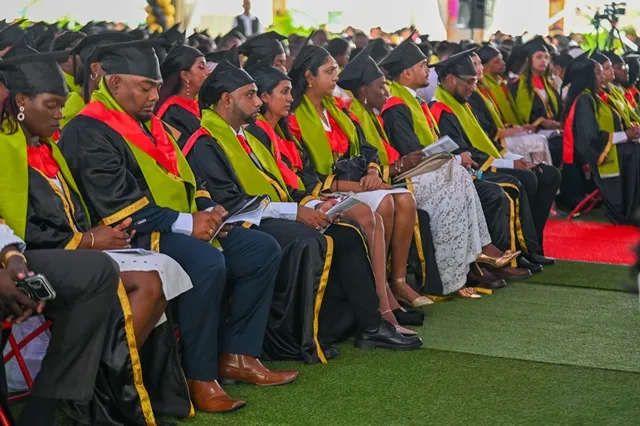Introduction: More Than Drilling Rigs
When people think of Guyana’s ocean these days, they imagine giant oil platforms pumping crude from beneath the waves. But step back from the Exxon story, and you’ll find a different narrative unfolding on Guyana’s 200-mile stretch of Atlantic coast and vast maritime zone: the emergence of a “blue economy” that looks beyond oil to fisheries, aquaculture, marine trade, and conservation. As one fisheries official put it recently, “Oil will run out one day, but the ocean’s bounty, if managed well, can sustain us forever.”
Guyana’s government has taken that to heart. Even amid the oil frenzy, it’s implementing policies to revive and diversify traditional ocean industries like fishing and to pioneer new ones like offshore aquaculture. There’s a fine balance to strike – expanding economic activity at sea while protecting marine ecosystems (especially as climate change brings challenges like eroding coastlines and changing fish patterns). The PPP/C administration appears keen to show it can walk and chew gum: enjoy the oil wealth and lay the groundwork for a sustainable ocean economy.
In this piece, we explore under-covered efforts such as the marine cage aquaculture project, initiatives to boost traditional fisheries with technology and financial support, developments in shipping and ports that integrate Guyana more into global maritime trade, and steps to shield the fragile coastline from climate impacts. The throughline: an understanding that Guyana’s future is tied not just to what lies under the ocean floor, but to what swims in its waters and sails on its surface.

Aquaculture Revolution: Fish Cages and Prawn Farms
Fishing has long been a livelihood for Guyanese along the coast and rivers. Yet in recent years, local fishermen have faced dwindling catches – partly due to overfishing and climate change altering fish migration. Enter a bold initiative: marine cage culture. In 2022, President Ali announced plans to deploy large floating cages for rearing fish, to guarantee fisherfolk a stable income of “close to $8 million annually” once up and running.
Fast forward to 2024, and the Ministry of Agriculture is expanding this project dramatically. Having piloted 6 cages in inland lakes (Capoey, Mainstay, Mashabo) with tambaqui fish – a robust species – the plan is to add 50 more cages across Regions 2, 5, 9, and 10. These cages are basically circular enclosures placed in bodies of water where fish are bred and fed until harvest. It’s like farming fish instead of catching wild stock, a significant shift for Guyanese fishers used to open-sea fishing.
This project is transformative for several reasons. It is turning traditional fishers into fish farmers, requiring new skills and mindset. To facilitate that, 30 fisherfolk were sent for training in China in 2023, learning cage management and aquaculture best practices. The government is urging fishers: adopt new tech or risk being left behind. As Minister Zulfikar Mustapha bluntly put it, “We can’t continue doing things the same old way and expect new results… Gone are the days you just cast your seine and expect baskets of fish”.
Besides cages in estuaries or lakes, shrimp aquaculture is another frontier. Guyana historically had a prawn farming industry that dwindled. Now, with government support (e.g. budget $1.2B for fisheries/aquaculture expansion in 2024), private investors are reviving shrimp farms in regions like Berbice. The idea is to tap into global demand for farmed shrimp, reducing reliance on wild catch. Already, experiments in breeding the popular whiteleg shrimp in brackish ponds have shown promise.
Guyana sees potential to supply CARICOM neighbors with farmed fish/shrimp, improving regional food security. Not to mention, a successful aquaculture sector can engage youth in coastal communities, as it’s somewhat more tech-oriented and stable than heading out to sea for a catch.
Of course, aquaculture must be managed to avoid pollution (fish waste) and disease outbreaks. The government has sought technical help from the UN’s FAO and countries like China and Indonesia to ensure sustainability. The narrative is that climate change and competition have hit wild fisheries, so proactively farming fish ensures a consistent, climate-resilient output.
Another piece: in hinterland indigenous communities, fish cage culture is being introduced in rivers to provide protein and income. If remote villages can produce fish surpluses, it tackles malnutrition and creates a product (smoked fish, for example) to trade.

Supporting Traditional Fisheries: Cash, Gear, and Governance
While new methods emerge, Guyana isn’t abandoning traditional fishers. In fact, the PPP/C administration delivered a massive $150,000 one-off grant in 2022 to each of 7,500 fisherfolk, totaling over $1.1 billion GYD. This infusion – effectively a stimulus for a struggling sector – helped fishers recover from low-catch years and high fuel prices. It was targeted to those in key fishing regions (Essequibo, Demerara, Berbice).
The grant wasn’t just relief; it was meant to encourage reinvestment in the trade (repairing boats, buying better nets). With Vice President Jagdeo himself distributing some cheques, the government signaled that fisherfolk matter in the new economy, not just oil workers.
And it’s not only cash. There’s talk of establishing cold storage facilities so fish catches can be preserved and exported at higher value rather than sold cheaply or wasted. The agri ministry has been handing out equipment like GPS for boats (for safety) and ice boxes. Steps to formalize the artisanal fishery are also afoot – such as registering all fishermen and providing safety training, given concerns about piracy incidents in the past.
The government also recognized that climate change has pushed fish further offshore or altered breeding grounds. Thus, they’ve negotiated licensing for Guyanese fishers to legally operate in Surinamese waters (a long-standing gripe was Suriname limiting licenses, now resolved diplomatically). And domestically, they support research via the Fisheries Department on fish stock assessments to adjust quotas or closed seasons as needed.
It’s a delicate dance: boost production without overfishing. So far, moves like encouraging alternative livelihoods (cage farming, etc.) help reduce pressure on wild stocks. Technology, like promoting use of fish finders or better boats, could ironically increase catch efficiency and risk depletion if not monitored. That’s why resource governance is key – the Fisheries Advisory Committee has been revitalized to give policy guidance, including fisherfolk representation.
Ports and Shipping: Riding the Waves of Trade
A robust ocean economy also means improving how Guyana uses the sea for trade. Historically, the country lacked a deepwater port; large ships couldn’t dock, so exports/imports were limited by draft. With surging output (rice, timber, bauxite, and soon perhaps ammonia or other oil byproducts), Guyana is developing port infrastructure.
At the mouth of the Demerara, the Vreed-en-Hoop Shore Base (an artificial island) is initially for oil industry but will have general cargo capacity. Over in the Berbice River, a deepwater port by CGX is meant to handle agriculture and container shipments, linking to Brazil. Government and private synergy here is crucial – they’ve widened channels and are planning new navigation aids for safer maritime transit. The Panama Canal expansion a few years back means global shipping wants fewer stops; a Guyanese deepwater port can attract direct lines, cutting freight cost for businesses and making exports more competitive.
Also, with the Corentyne Bridge on horizon, Guyana could see a ferry or shipping service connecting new markets. Possibly a coastal ferry from Georgetown to Paramaribo might revive after decades – leveraging tourism and trade.
One should mention ferry fleet renewal: The new MV Ma Lisha ferry gifted by India now serves the Northwest District, improving connectivity for Region 1 communities. Though not “blue economy” in profit terms, it’s social infrastructure crucial for coastal communities and even regional trade (moving goods along coast cheaply).
Additionally, Guyana’s pursuit of the “Green State” concept includes exploring offshore renewable energy – e.g., wind farms near the coast or using mangroves as natural sea defenses (there’s been active mangrove replanting). They haven’t built offshore wind yet, but it’s a likely future component, turning ocean winds into electricity.
Climate and Coastal Resilience: Safeguarding the Blue Future
Guyana’s coast lies below sea level in parts, protected by a system of seawalls, mangroves, and sluices. A thriving ocean economy can’t exist if the coastline is ravaged by floods or erosion. The government thus secured a US$45 million loan from the World Bank in 2024 to fortify sea defenses and drainage. Over 45 drainage sluices will be rehabilitated to prevent saltwater intrusion and flooding on fertile lands. This matters hugely to fisheries and aquaculture too – as saltwater incursion can ruin coastal ponds or farmlands that communities depend on.
They’re essentially climate-proofing the low coastal plain which houses 90% of people and most fish landing sites. Stronger pumps, higher dykes, and preserved mangrove belts are part of the strategy. The Low Carbon Development Strategy (LCDS) explicitly includes coastal adaptation projects using both state funds and carbon credit revenues.
Moreover, the conversation in Guyana has started to include marine protected areas. In 2022, Guyana created its first protected area in the Atlantic, the Shell Beach Protected Area, known for nesting sea turtles. This sets a precedent: even as they exploit the ocean, they will conserve critical habitats. Balancing fishing zones with conservation zones (no-take areas where fish can replenish) will be key to long-term fishery health.
Oil companies are being co-opted into this ethos too – required to observe strict spill prevention, sponsor marine research, and avoid interfering with fishing grounds where possible. The government touts that it can be both an oil producer and a climate champion, citing for instance its forest carbon credits that effectively offset much of the petroleum emissions. But it knows an oil spill or similar could devastate fisheries; hence a robust regulatory eye on that industry is in the interest of the blue economy.
Toward a Diversified Ocean Economy
Imagine a future Guyana where on any given day: an offshore wind farm spins off the coast of Guyana powering a green hydrogen plant; near it, a cluster of ocean fish cages teem with growing tambaqui and snapper destined for Caribbean markets; at Port Essequibo, a medium-sized cargo ship loads containers of shrimp, rice, and aquaculture feed for export; and on the beaches, tourists gather for a community-led eco-tour watching baby sea turtles scuttle to the sea at Shell Beach. It’s a multi-use vision of the ocean that the government is gingerly steering toward.
The groundwork is being laid now: experiments in blue tech, improved infrastructure, and enabling policies. For instance, Guyana is exploring the feasibility of offshore seaweed farming – seaweed has markets in nutraceuticals and as a sustainable product. Another budding idea is sport fishing tourism – the Rupununi rivers already attract anglers worldwide for giant arapaima fish. Extending that to deep-sea sport fishing could create niche tourism, regulated to be sustainable (catch-and-release mostly).
Even education is aligning: the University of Guyana has expanded its marine biology and fisheries programs, training locals in ocean sciences. The more local expertise, the better for managing these resources internally.
There is, of course, need for caution. Too often, oil wealth can overshadow and even harm renewable sectors by causing currency appreciation (“Dutch disease”) making fisheries exports less competitive. The government is cognizant – it’s why they invest in value-added processing so exports fetch higher prices to offset currency effects, and they maintain sovereign wealth fund rules to smooth spending.
The blue economy push also ties into regional leadership. As Guyana holds influence in CARICOM, it spearheads initiatives like the 25% by 2025 food import reduction which includes boosting regional fish supply (Guyana leads on aquaculture among CARICOM). It thus can share successes – if cage farming works in Guyana, others may adopt it.
Conclusion: From Coastal Villages to the High Seas
Guyana’s identity has always been tied to its land – “land of many waters”, yes, but waters mostly meant rivers in the popular psyche. Now the country is embracing its maritime identity too. Fisherfolk who for generations set out at dawn in wooden boats now see fiberglass vessels and fish pens on the horizon. The transformation of the ocean economy is subtle but significant: it’s about ensuring that the traditional communities are not left behind in the oil boom, that they instead ride a rising tide (literally and figuratively).
The PPP/C government’s subtle alignment with this – funding fishers, innovating with aquaculture, guarding coasts – fits the narrative of a progressive developmental state. They rarely trumpet these as green initiatives per se (to avoid being accused of neglecting oil?), but in practice these are climate-smart policies. Even the IMF noted Guyana’s efforts to diversify its energy and economy in line with climate goals, somewhat unusual for a new petro-state.
Challenges remain: illegal fishing by foreign trawlers (Venezuelan poachers have been a problem), the need to police that so local fishers aren’t robbed of catch. Also, balancing oil infrastructure (which occupies some sea space) with fishing zones. And making sure new industries like aquaculture do benefit small operators, not just big investors.
But the vision of a diversified blue economy is compelling. It means resilience – if oil prices slump or reserves deplete, Guyana’s ocean can still provide livelihoods and revenue through other means. It means food security – more fish farmed locally means less imported. And it means maritime sovereignty – a country more actively present in its waters is better able to protect them (for instance, against any territorial encroachments).
For the average Guyanese, perhaps the immediate symbol of this shift is on their plate: where once imported saltfish was staple, now increasingly one sees locally farmed tilapia or shrimp in the market, proudly labeled “Made in Guyana”. Or in hearing that families in coastal villages have steadier incomes because they can harvest fish year-round from pens. These small changes add up to a big story: Guyana, buoyed by oil, is not forgetting the deeper, enduring wealth swimming in its seas and estuaries.
In sum, the transformation of Guyana’s blue economy is an integral chapter of its growth story – quieter than oil strikes, but possibly just as important for the long run. As the country navigates this chapter, it sets an example for others on how to mind the ocean commons while unleashing its economic potential. The sea which once separated Guyana from the world is now becoming the bridge – carrying its products, feeding its people, and connecting its destiny to global tides.
- Cleaning House: Guyana’s Fight Against Corruption and the Road to Good Governance
- Culture Minister Slams “Blasphemous” Song – Hindu Community Outraged by Vulgar Lyrics
- GOAL Scholarship Programme Surpasses Target as Thousands Graduate
- Sports: Golden Jaguars Bank on Youth as Glasgow Shines in World Cup Qualifiers




